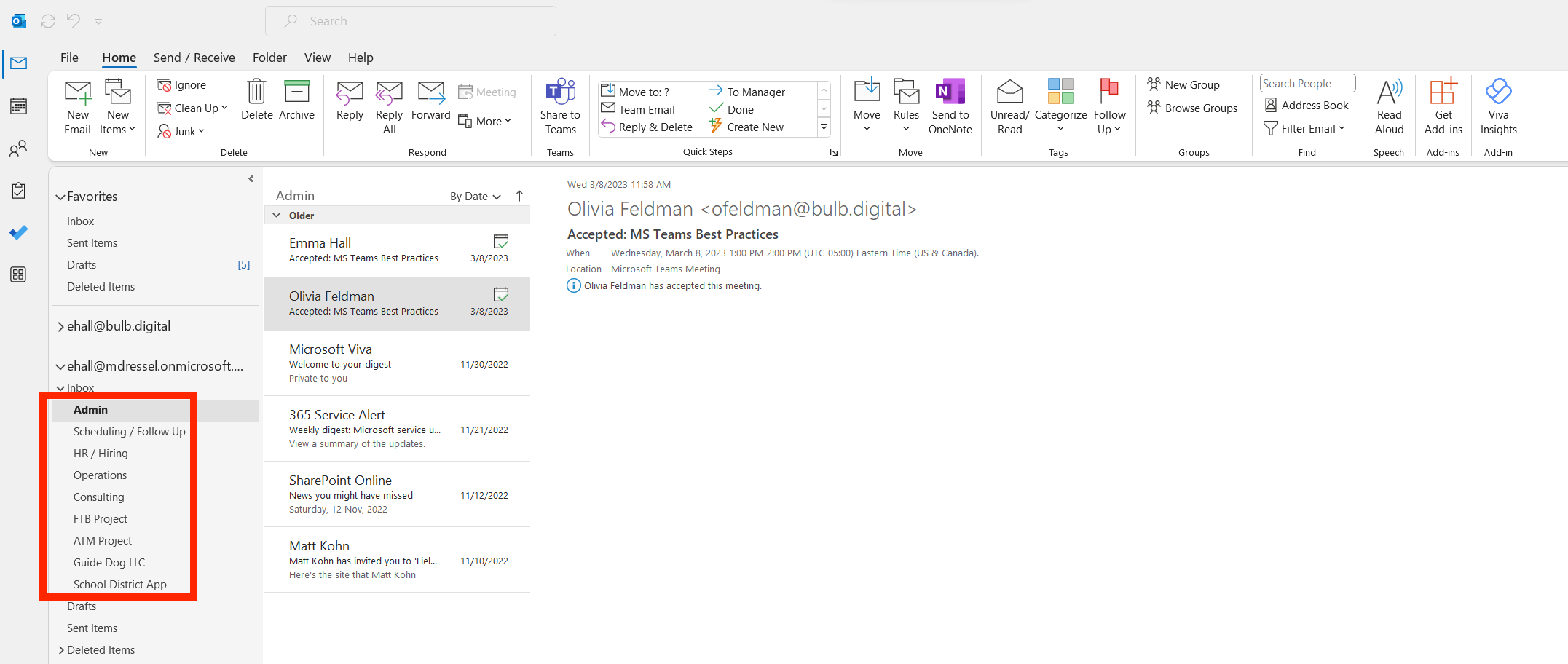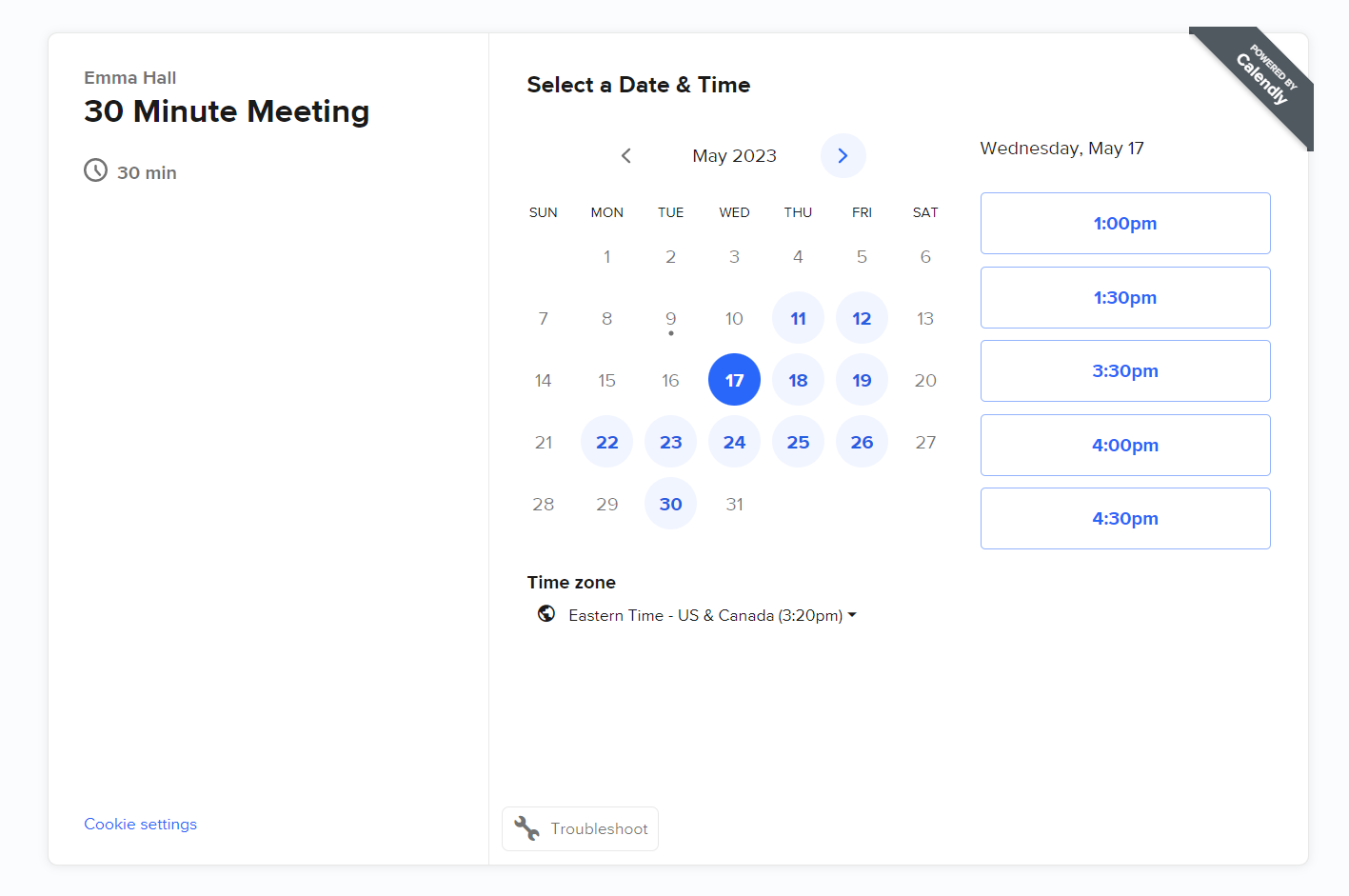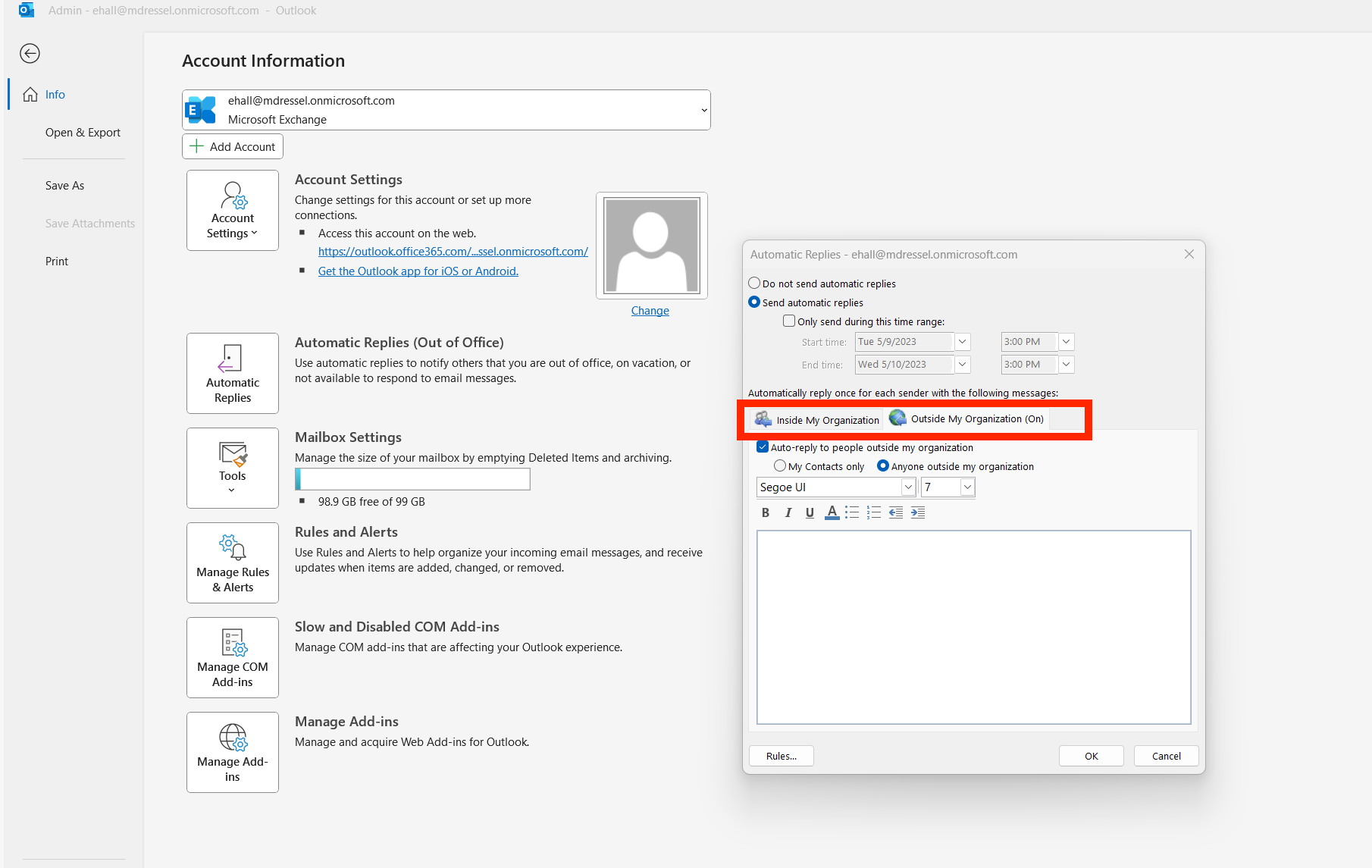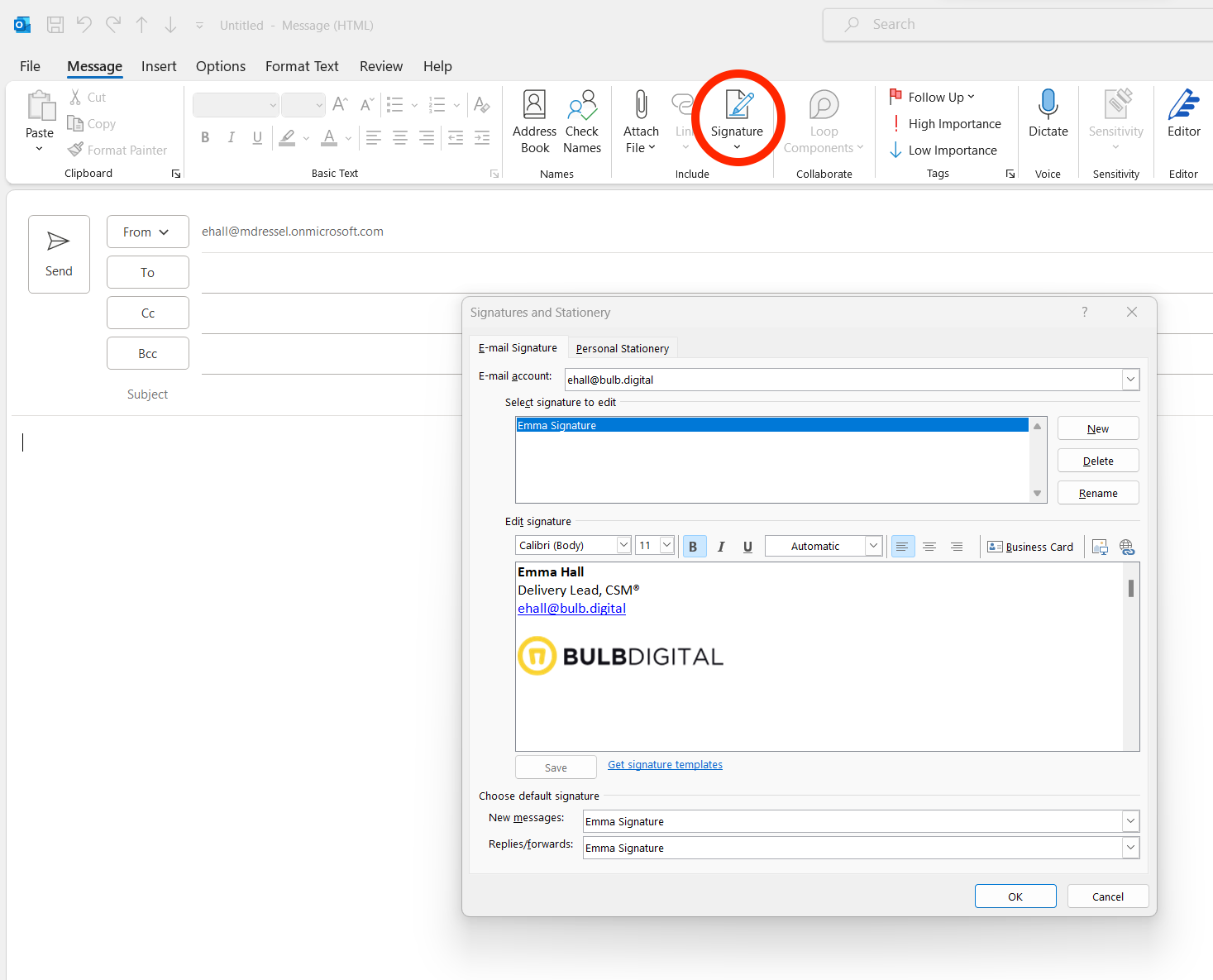Practical Advice
How to Make the Most of Microsoft Outlook: Our 3 Top Tips
If you use Outlook, you know what a pain point managing your inbox, finding emails, scheduling meetings, and organizing your calendar can be. When you know how to use the features of Outlook to their full potential it calms the chaos and brings peace to your workday.
Unfortunately, it’s assumed everyone “knows how to use email” these days and rarely does anyone ever take the time to share simple tips and tricks that make a big difference.
Hardly anyone takes the time to sit down and explain Outlook best practices.
Reason #1: Assume everyone has used Outlook before.
Reason #2: We’ve all had email for years and know enough to get by.
Reason #3: Difficult to place a value on the time that could be saved using a few simple tricks.
Reason #4: Outlook changes frequently and continuous learning can feel overwhelming.
Have no fear, with these few simple “know-hows” you’ll be using Outlook more effectively and efficiently than ever before.
Here’s how, tip by tip 😁
Tip 1: Color Code your Calendar to Set-up your Workday for Success

It’s important to come to meetings prepared, not to double book yourself and keep track of multiple workstreams at once. By sorting your calendar meetings into different categories using the “Categorize” tool you create a visual picture of your week that helps you visualize what to prepare for. Set different categories such as: external, internal, Project A, Project B, Calendar Block for individual work, Weekly 1:1 meeting, etc.
You can be as detailed or as high-level as you want. This allows you to take a quick glance at any given day or week and visually digest what the bulk of your week will hold and what to prepare for. Unlock the power visual cues can have on calendar organization.
Tip 2: Filing Emails by Project/Category

I don’t know if it’s just me but Outlook search feels like it gets worse every year? It can be difficult to find an email, especially when you’re crunched for time and searching through the hundreds of emails the search spits back is not an option. The easiest way to fix this is to file your emails by Project or Category.
For example, I have Project folders set up where I file all emails pertaining to specific projects. I also have specific category files such as Hiring and HR for emails related to those specific activities internally. Every time you action an email, file it into it’s project or category folder. It’s generally ten times easier to find an email you need by searching for it in it’s project folder than it is looking in your “inbox.”
Tip 3: Scheduling Meetings — Internally and Externally

There are two types of people in this world: people who send emails back and forth to schedule meetings and people who don’t. Don’t be one of the back-and-forth people – there IS a better way! For internal scheduling, this is the most straightforward because you should have access to see each team members schedule through the Outlook “Scheduling Assistant” tab and choose a time that is free for everyone.
For external scheduling, you can use a tool such as MS Bookings or Calendly. We use Calendly and it’s changed my life! The key to using a tool like Calendly is to keep your calendar up to date, or set specific working hours during which you want to allow the person to schedule and send them a link for them to choose a time that works.
You can get as specific as only showing 1 available time slots if you want to limit the options. But it removes the need to ever again send an email saying “anytime tomorrow after 3pm but before 5pm or Friday before 4pm.” The ambiguity of back-and-forth scheduling meetings is cringe-worthy.


Is Team Communication Holding You Back?
Find Out in Just 2 Minutes.
Take our quick scorecard to uncover communication gaps and hidden barriers within your team.
Bonus Tip #1: Set Up Your Out of Office Message Correctly

Whether it’s leaving their out of office message on for days, weeks, or even months after they are back from time off, or forgetting to change their message to sent to both internal and external contacts, so many people go wrong when setting up an Out of Office message in Outlook.
The tool itself is not very intuitive to use and typically people are in a rush to set it up before leaving on a vacation so it’s a very common mistake. The key here is to always use the timeframe resource (even if you think – I’ll remember to turn it off!). Simply click `File` and choose `Automatic Replies`.
Next, choose the `Send automatic replies` option and set your time frame. I usually set mine to turn off late the evening before my return to the office. Next, make sure whatever you type in the `Inside My Organization` box is either copy/pasted into the OTHER tab labeled `Outside My Organization`, or create a different message.

This is a great tool for those who want to message differently to their two audiences, but can be a nuisance if you are trying to set a quick message for whoever emails you while you’re away (internal or external).
Bonus Tip #2: Set Up Your Email Signature

The key to this is that you have to open a new email (as if you are going to send an email) to find the option to create your signature. This has never felt intuitive to me as it feels like something that should be available in general settings. Open the new email and choose “Signature” from the center of the top ribbon.
You have lots of options here to customize to your preferences, such as when your signature is sent (only new emails, or also on replies/forwards). You can paste in an image of your organization’s logo and resize. Be aware that if you use a fancy font that most computers don’t come with by default, the formatting and font may not show up correctly when your email is received.
Learning the ins and outs of Outlook will lead to a happier work life.
Sometimes it feels like Outlook is a necessary evil. I look forward to the day email is no longer used which may not be that many years into the future, but for now it’s here to stay. Keeping yourself up to date and using the built-in tools it offers is worth it. Don’t be afraid to branch out to other platforms, like Calendly, that integrate with Outlook and help fill the gaps of services it doesn’t provide.














